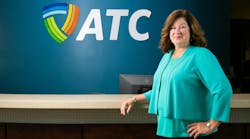In a report prepared for WIRES, the trade association that promotes investment in transmission, The Brattle Group estimated that between $30 billion to $90 billion of incremental transmission investments will be necessary in the United States by 2030 to meet the changing needs of the system due to increasing electrification alone, with an additional substantial investment needed from 2030 to 2050. These investments are in addition to the investments needed to maintain the existing transmission system, replace aging assets, and integrate renewable generation built to meet existing load. This level of new investment is equivalent to $3 billion to $7 billion per year on average through 2030, and $7 billion to $25 billion per year on average between 2030 and 2050.
A subsequent report released by ScottMadden, Inc., found the pressing need for more transmission investment in all regions of the country to meet the challenges posed by changing energy resources, increasing electrification, a greater need and preference for location-constrained renewable generation, and ever-growing concerns about the risks to the resilience of the North American electric power system. Despite the well-documented evidence that more transmission is needed across the country, ScottMadden found that regulatory policy has failed to support this growing need and that the financial incentives to developers of transmission which successfully drove significant transmission investments through the early 2000s are being reduced.
Against the backdrop of the need for an unprecedented increase in transmission, the fact of the matter is that builders of transmission today face significant uncertainty in the current regulatory and economic climate. Investment in transmission is a long-term proposition, and investors require certainty that they will recover their investment and earn a reasonable return. The current unstable economic climate, with above-average inflation, uncertain regulatory environment, lengthy and ever-growing lead times for construction of transmission, and long depreciable life of transmission assets necessitate regulatory policies that reflect stable ratemaking processes and clearly and unambiguously incentivize investment in transmission.
For these reasons, it is critical for regulators like the Federal Energy Regulatory Commission, or FERC, to adopt and implement policies designed to promote and facilitate investment that must be made to meet the future energy needs of customers, and of the nation. For years, FERC successfully encouraged transmission investment through robust rates of return on equity (ROE) sometimes enhanced by targeted incentive adders. In addition, in the past FERC creatively developed and effectively employed non-ROE ratemaking tools, including the Abandoned Plant incentive, the construction work in progress (CWIP) incentive, and transmission formula rates (TFRs) in a manner that has proven effective in supporting the development of needed transmission infrastructure. History has shown that the deployment of all of these tools support transmission development by improving cash flows, reducing risks, enhancing regulatory certainty, and helping to ensure cost recovery.
Regrettably, today's regulatory policies are not in alignment with that historical approach. Instead of incentivizing transmission investment, recent actions and those under consideration by FERC have made building new transmission infrastructure riskier and financially less attractive. As the ScottMadden report observed, the evolution of FERC policy has not supported the basic understanding that transmission is needed across the country to support reliability and the integration of renewables, as “[i]ncentives policy, which drove significant investments through the 2000s is changing, and returns on equity and adders are being reduced.” FERC policies have resulted in the gradual erosion of ROEs notwithstanding the greater economic uncertainty and higher inflation of recent years. Worse, FERC has exacerbated the uncertainty around transmission investment in some regions for years (or in one region for more than a decade) by failing to resolve administrative proceedings to establish ROEs. Recent proceedings by FERC to consider reducing, restricting, or eliminating longstanding policies on ROE incentive adders and other non-ROE incentives create even more regulatory uncertainty and, if implemented, would discourage, rather than promote and incentivize, transmission investment that is necessary to meet the nation’s future energy needs.
As former FERC Chairman Joseph Kelliher recently stated while reflecting on how to make the grid more reliable during a WIRES-sponsored webinar on the 20th anniversary of the 2003 blackout, “I also think FERC policy should encourage transmission investment… it is illogical to make an investment riskier and less profitable and expect more of it will result.” I have often said that we will need the equivalent of a wartime effort if we are to build out the grid on the aggressive timetable needed to meet ambitious clean energy mandates and goals. During World War II as Britain stood alone against German forces, British Prime Minister Winston Churchill pleaded with the American government, “Give us the tools, and we will finish the job.”
FERC has the tools today in its regulatory toolchest to incentivize the large-scale investment in transmission that is critically necessary in the decades ahead. FERC needs to use those tools, and help finish the job.
Larry Gasteiger is executive director of WIRES.


